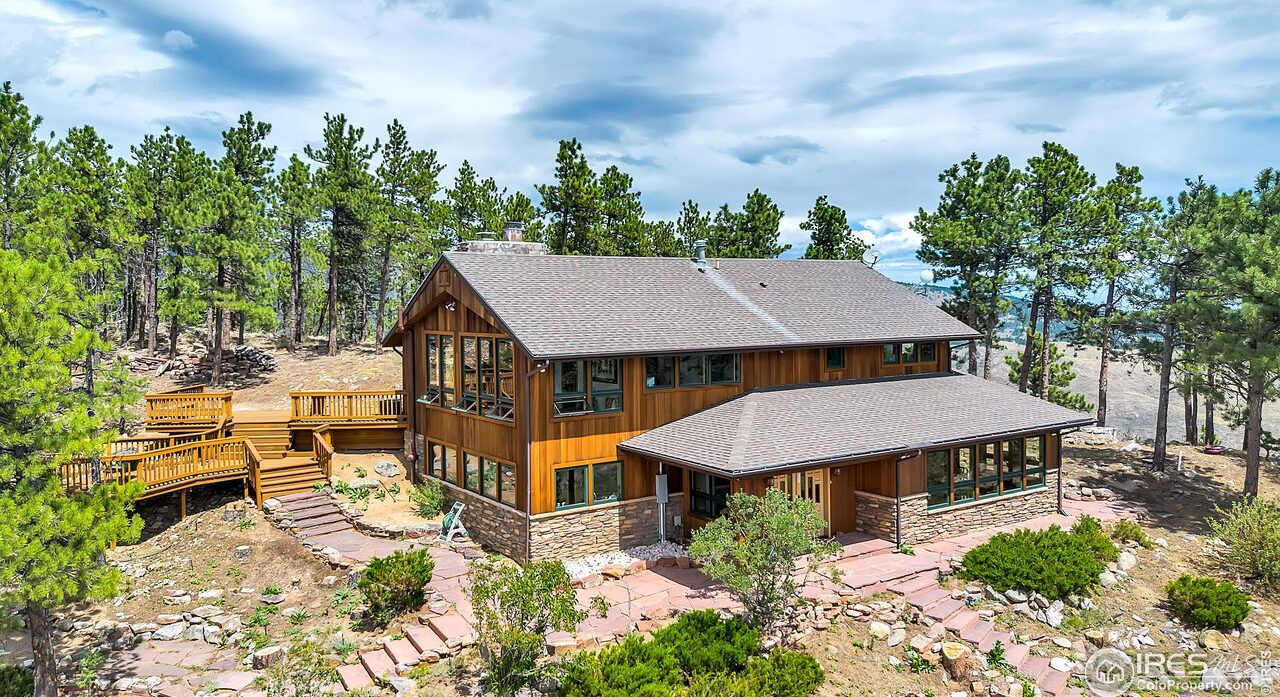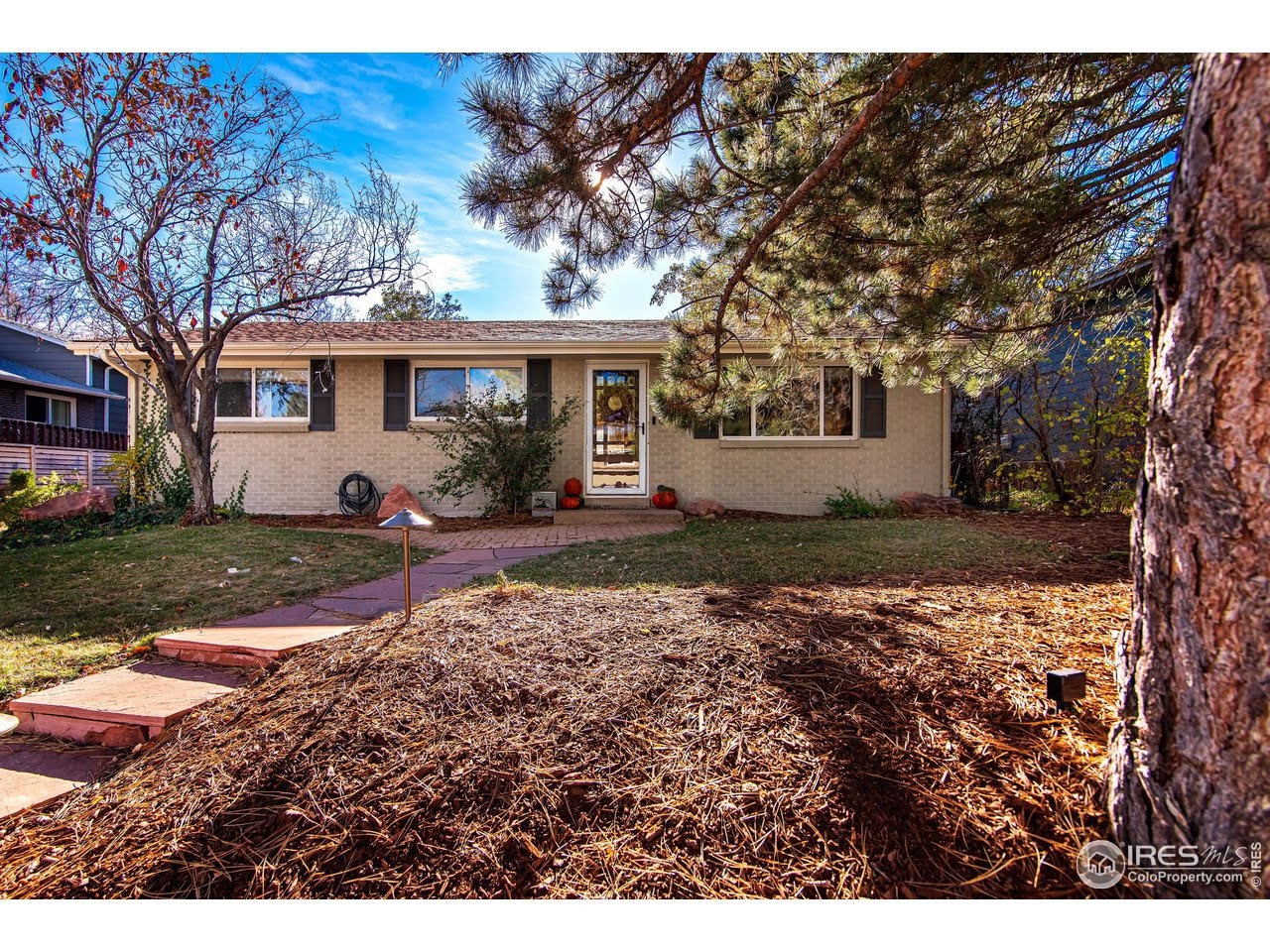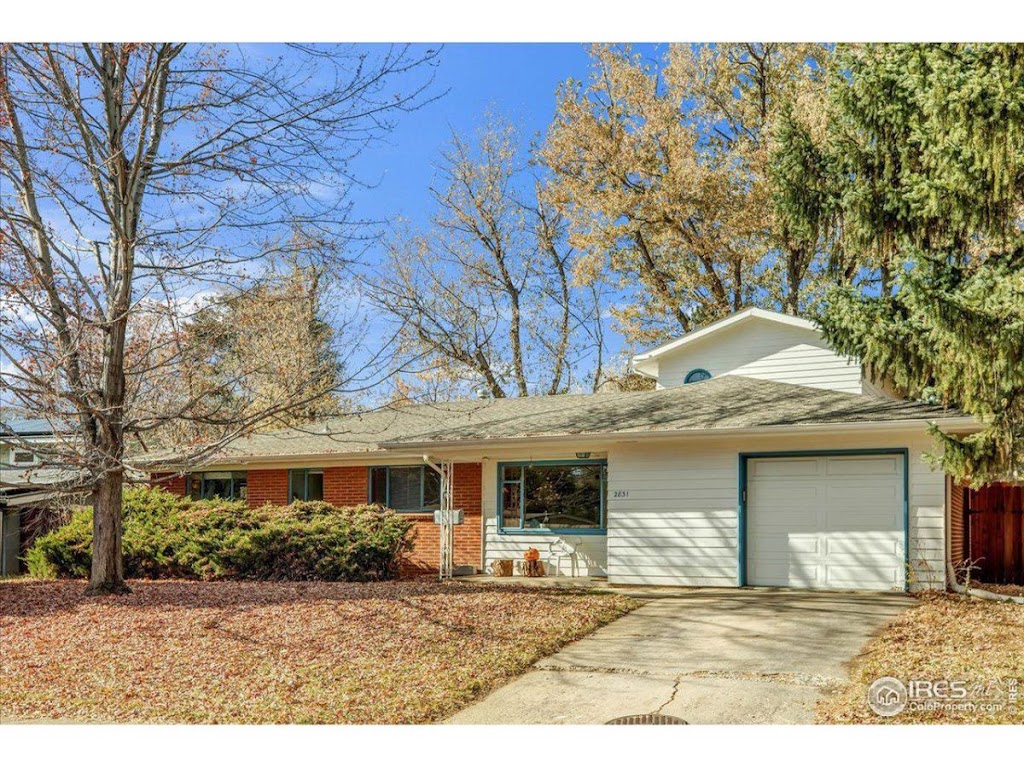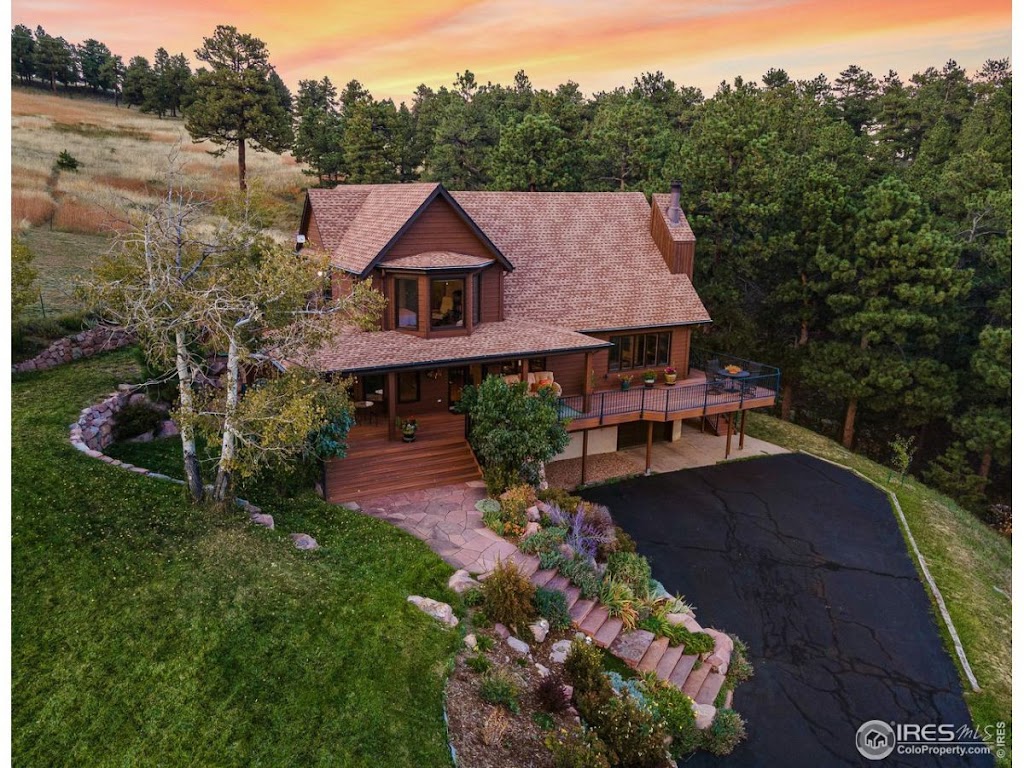Myths and Facts: The Pine Beetle Epidemic
by Osman Parvez

Dead trees. Rust colored mountainsides. A plague that’s spreading quickly. These sort of thoughts are giving people in Colorado a fright. Too bad this nightmare is real.
There’s a lot of information out there, most of it passed by word of mouth. What’s myth and what’s fact? What’s the biggest risk? And as a homeowner, what can you do about it?
#1: The trees are being killed by invasive beetles:
Partially true.
The bug in question is the Mountain Pine Beetle (Dendroctonus ponderosae), also called the Black Hills beetle or Rocky Mountain Pine beetle. But it’s not an invasive species from Asia or some other far off place. The beetle is native to Colorado. Now here’s what most people don’t know. The beetle is only partially responsible for killing the trees. As part of their life cycle, they lay eggs in the trees and coincidentally spread a fungus. It’s the fungus which actually clogs the trees vascular system and kills it.
#2: Global warming is to blame:
Partially true.
Warmer weather is definitely helping the beetles. Beetle larvae have a natural anti-freeze, but if frigid weather arrives before the larvae can produce enough anti-freeze, populations are kept in check.
However, warmer weather is only half the story. Just like any other predator (except humans), Pine beetles tend to kill old, weak, or diseased trees. 120 years ago, much of the forests in the high country of Colorado were logged for lumber or fuel. The composition of today’s forest is a direct result of that indiscriminate logging (and fire). As the forests came back over the past century, they did so largely with the same species (monoculture). Today, most stands of lodgepole pine are about the same age. It’s a little like the baby boomers today. The trees had their own baby boom -over a century ago- and now the majority of these trees have grown old at the same time.
#3 The Beetles are doing unexpected things:
True
According to foresters, the beetles never used to go above 10,000 feet and were never suppose to attack trees less than 4″ in diameter. They also were only supposed to attack Lodgepole and Ponderosa Pine. Today, the beetles are ignoring these rules of thumb. They’re hitting small trees. They’re going above 10,000 feet. They’re attacking Spruce and Fir (though they don’t necessarily kill these species).
#4 The Beetles have no natural predator:
False
Woodpeckers and certain other insects feed on beetle adults and larvae under the bark. But, these natural predators have not been effective in controlling this outbreak. A rapid increase in natural predators is not expected to have much impact in the short term.
#5 The damage is catastrophic and irreversible.
Partially true.
This might upset some people, but the truth is that it depends on how you look at it. We’re now approaching 1 million acres of Lodgepole pine forest infected by the beetle. Dead trees are ugly, certainly. Nobody envisions rusty hillsides when they think of the Rockies. Yet it’s also part of a natural cycle.
Here’s where it could hurt. There are homes, jobs, and entire industries at stake. Diminished aesthetics will impact tourism, property values, taxes, and our state’s economy. While the 5 county region accounts for only 13% of all travel spending in the state, high country landscapes help to draw over 20 million visitors to all of Colorado. Visitors spent $7.6Bn in our state last year. Aesthetics matter. Mountain resort communities are highly dependent on tourism and 2nd homes, but the whole state benefits from beauty of the Rocky Mountains.
#6 We’re safe in Boulder (and elsewhere on the Front Range):
False
On windy days, the beetles can be carried up over the continental divide. There are already infestations on the front range and could be more. We’re not safe and it’s probably just a matter of time.
#7 We’ll just harvest the trees for lumber:
False.
Experimental facilities are expected to come online in the future. These are intended to convert dead trees to wood products (such as pellets for wood burning stoves). At this time, the plants are not operating and the dead trees do not represent any economic value. The timber industry was largely driven out of Colorado over the past 40 years and there is no sizable effort to harvest the dead trees at this time.
The cost to remove the trees is quite high. For example, in Summit County estimates were recently given to remove dead trees from near the hospital. According to sources familiar with the project, the work was expected to cost about $1600/acre. These sort of expenses make the idea of harvesting trees on a grand scale impossible.
Myth #8: Real Estate Values Have Not Been Impacted:
True (so far).
Realtors from mountain areas infested by the beetles report they are seeing ZERO slowdown in real estate demand. Property demand continues to be strong and like other select second home markets, is flying contrary to the general downturn in real estate. The second home market in Colorado is fueled by Baby Boomers seeking vacation property and the demand is global. At this time, the high country is not experiencing the same slowdown on the front range.
Ah, but one thing might change that…
The Greatest Fear? Wildfire.
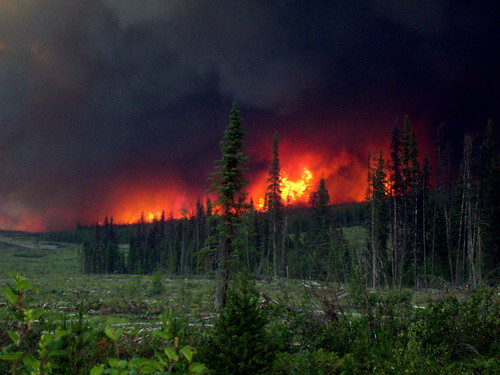
In addition to the loss of property, a large uncontrolled fire will likely result in a exodus of jobs generated by 2nd homes, plus lost dollars from the winter, summer, and fall tourist seasons.
Water systems may also be impacted. About a quarter of the raw water collected for the Denver Water Board comes from areas at risk. Half a million people rely on water from these counties. A major fire will effect the quality of the water supply as well as the facilities that transport the water. But it’s not just Denver. Northern Colorado will also be effected. The areas at risk provide supplemental water supplies to Ft. Collins, Greeley, Boulder, Longmont, Loveland, Broomfield, Lafayette, Louisville, and more.
Electrical transmission lines cross through the mountains and are at risk. Electricity from western Colorado crosses high risk areas to serve demand on the Front Range. The transmission lines go through areas where bark beetle infestations lie. Obviously, heat from a fire will destroy the lines. Arcing can also occur from power lines to trees, when trees fall. The loss of one major transmission line can threaten power in Denver, even statewide. Everyone will pay for outages in the form of lost productivity and higher rates for infrastructure replacement.
As you can see, the issues related to the Pine Beetle are real. If you’re considering buying or selling property in the high country, be sure to do your due diligence. Although nothing is ever fool proof, there may be things you can do to lessen the risk to your property.
According to the Colorado State Forest Service…
Two factors have emerged as the primary determinants of a home’s ability to survive wildfires: choosing fire-resistant roofing material and creating a wildfire defensible zone.
First, it is important to choose a fire-resistant roofing material that is rated when building a house in or near forests or grasslands. class C or higher. Avoid flammable materials such as wood or shake shingles. Defensible space is an area around a structure where fuels and vegetation are treated, cleared or reduced to slow the spread of wildfire towards the structure. It also reduces the chance of a structure fire moving from the building to the surrounding forest. Defensible space also provides room for firefighters to do their jobs. Your house is more likely to withstand a wildfire if grasses, brush, trees, and other common forest fuels are managed to reduce a fire’s intensity.
The following are a few key steps to creating a defensible zone:
- Actively manage roof: Clean roof and gutters of pine needles and leaves at least twice a year to eliminate an ignition source for potential fires.
- Stack fire wood away from house: Locate firewood uphill at least 15 feet from your home. Do not stack firewood under the deck.
- Remove unhealthy vegetation: Trees and shrubs that are stressed, diseased, dead or dying should be removed so that they do not become a fuel source for potential fires.
- Choose surrounding vegetation wisely: Maintain a greenbelt (irrigated if possible) immediately around your home using grass, flower garden, and/or fire-resistant ornamental shrubbery. An alternative is rock or other non-combustible material, which may be preferable if your house is made of wood or other flammable materials. Avoid using bark or wood chip mulch in this area.
Images: CSU and Macpablo Campbell River
note: I want to thank Gary Severson from NWCOG and Mike Retzlaff from the USDA – Forest Service for the talk they gave at Colorado’s 2007 State Demography Conference. Their presentation was the inspiration as well as much of the factual basis for this post.
—-
Want to get blog updates via email? Click HERE.
Ready to buy or sell? Schedule an appointment or call 303.746.6896.
You can also like our Facebook page or follow us on Twitter.
As always, your referrals are deeply appreciated.
—
The ideas and strategies described in this blog are the opinion of the writer and subject to business, economic, and competitive uncertainties. We strongly recommend conducting rigorous due diligence and obtaining professional advice before buying or selling real estate.
Myths and Facts: The Pine Beetle Epidemic
by Osman Parvez

Dead trees. Rust colored mountainsides. A plague that’s spreading quickly. These sort of thoughts are giving people in Colorado a fright. Too bad this nightmare is real.
There’s a lot of information out there, most of it passed by word of mouth. What’s myth and what’s fact? What’s the biggest risk? And as a homeowner, what can you do about it?
#1: The trees are being killed by invasive beetles:
Partially true.
The bug in question is the Mountain Pine Beetle (Dendroctonus ponderosae), also called the Black Hills beetle or Rocky Mountain Pine beetle. But it’s not an invasive species from Asia or some other far off place. The beetle is native to Colorado. Now here’s what most people don’t know. The beetle is only partially responsible for killing the trees. As part of their life cycle, they lay eggs in the trees and coincidentally spread a fungus. It’s the fungus which actually clogs the trees vascular system and kills it.
#2: Global warming is to blame:
Partially true.
Warmer weather is definitely helping the beetles. Beetle larvae have a natural anti-freeze, but if frigid weather arrives before the larvae can produce enough anti-freeze, populations are kept in check.
However, warmer weather is only half the story. Just like any other predator (except humans), Pine beetles tend to kill old, weak, or diseased trees. 120 years ago, much of the forests in the high country of Colorado were logged for lumber or fuel. The composition of today’s forest is a direct result of that indiscriminate logging (and fire). As the forests came back over the past century, they did so largely with the same species (monoculture). Today, most stands of lodgepole pine are about the same age. It’s a little like the baby boomers today. The trees had their own baby boom -over a century ago- and now the majority of these trees have grown old at the same time.
#3 The Beetles are doing unexpected things:
True
According to foresters, the beetles never used to go above 10,000 feet and were never suppose to attack trees less than 4″ in diameter. They also were only supposed to attack Lodgepole and Ponderosa Pine. Today, the beetles are ignoring these rules of thumb. They’re hitting small trees. They’re going above 10,000 feet. They’re attacking Spruce and Fir (though they don’t necessarily kill these species).
#4 The Beetles have no natural predator:
False
Woodpeckers and certain other insects feed on beetle adults and larvae under the bark. But, these natural predators have not been effective in controlling this outbreak. A rapid increase in natural predators is not expected to have much impact in the short term.
#5 The damage is catastrophic and irreversible.
Partially true.
This might upset some people, but the truth is that it depends on how you look at it. We’re now approaching 1 million acres of Lodgepole pine forest infected by the beetle. Dead trees are ugly, certainly. Nobody envisions rusty hillsides when they think of the Rockies. Yet it’s also part of a natural cycle.
Here’s where it could hurt. There are homes, jobs, and entire industries at stake. Diminished aesthetics will impact tourism, property values, taxes, and our state’s economy. While the 5 county region accounts for only 13% of all travel spending in the state, high country landscapes help to draw over 20 million visitors to all of Colorado. Visitors spent $7.6Bn in our state last year. Aesthetics matter. Mountain resort communities are highly dependent on tourism and 2nd homes, but the whole state benefits from beauty of the Rocky Mountains.
#6 We’re safe in Boulder (and elsewhere on the Front Range):
False
On windy days, the beetles can be carried up over the continental divide. There are already infestations on the front range and could be more. We’re not safe and it’s probably just a matter of time.
#7 We’ll just harvest the trees for lumber:
False.
Experimental facilities are expected to come online in the future. These are intended to convert dead trees to wood products (such as pellets for wood burning stoves). At this time, the plants are not operating and the dead trees do not represent any economic value. The timber industry was largely driven out of Colorado over the past 40 years and there is no sizable effort to harvest the dead trees at this time.
The cost to remove the trees is quite high. For example, in Summit County estimates were recently given to remove dead trees from near the hospital. According to sources familiar with the project, the work was expected to cost about $1600/acre. These sort of expenses make the idea of harvesting trees on a grand scale impossible.
Myth #8: Real Estate Values Have Not Been Impacted:
True (so far).
Realtors from mountain areas infested by the beetles report they are seeing ZERO slowdown in real estate demand. Property demand continues to be strong and like other select second home markets, is flying contrary to the general downturn in real estate. The second home market in Colorado is fueled by Baby Boomers seeking vacation property and the demand is global. At this time, the high country is not experiencing the same slowdown on the front range.
Ah, but one thing might change that…
The Greatest Fear? Wildfire.

In addition to the loss of property, a large uncontrolled fire will likely result in a exodus of jobs generated by 2nd homes, plus lost dollars from the winter, summer, and fall tourist seasons.
Water systems may also be impacted. About a quarter of the raw water collected for the Denver Water Board comes from areas at risk. Half a million people rely on water from these counties. A major fire will effect the quality of the water supply as well as the facilities that transport the water. But it’s not just Denver. Northern Colorado will also be effected. The areas at risk provide supplemental water supplies to Ft. Collins, Greeley, Boulder, Longmont, Loveland, Broomfield, Lafayette, Louisville, and more.
Electrical transmission lines cross through the mountains and are at risk. Electricity from western Colorado crosses high risk areas to serve demand on the Front Range. The transmission lines go through areas where bark beetle infestations lie. Obviously, heat from a fire will destroy the lines. Arcing can also occur from power lines to trees, when trees fall. The loss of one major transmission line can threaten power in Denver, even statewide. Everyone will pay for outages in the form of lost productivity and higher rates for infrastructure replacement.
As you can see, the issues related to the Pine Beetle are real. If you’re considering buying or selling property in the high country, be sure to do your due diligence. Although nothing is ever fool proof, there may be things you can do to lessen the risk to your property.
According to the Colorado State Forest Service…
Two factors have emerged as the primary determinants of a home’s ability to survive wildfires: choosing fire-resistant roofing material and creating a wildfire defensible zone.
First, it is important to choose a fire-resistant roofing material that is rated when building a house in or near forests or grasslands. class C or higher. Avoid flammable materials such as wood or shake shingles. Defensible space is an area around a structure where fuels and vegetation are treated, cleared or reduced to slow the spread of wildfire towards the structure. It also reduces the chance of a structure fire moving from the building to the surrounding forest. Defensible space also provides room for firefighters to do their jobs. Your house is more likely to withstand a wildfire if grasses, brush, trees, and other common forest fuels are managed to reduce a fire’s intensity.
The following are a few key steps to creating a defensible zone:
- Actively manage roof: Clean roof and gutters of pine needles and leaves at least twice a year to eliminate an ignition source for potential fires.
- Stack fire wood away from house: Locate firewood uphill at least 15 feet from your home. Do not stack firewood under the deck.
- Remove unhealthy vegetation: Trees and shrubs that are stressed, diseased, dead or dying should be removed so that they do not become a fuel source for potential fires.
- Choose surrounding vegetation wisely: Maintain a greenbelt (irrigated if possible) immediately around your home using grass, flower garden, and/or fire-resistant ornamental shrubbery. An alternative is rock or other non-combustible material, which may be preferable if your house is made of wood or other flammable materials. Avoid using bark or wood chip mulch in this area.
Images: CSU and Macpablo Campbell River
note: I want to thank Gary Severson from NWCOG and Mike Retzlaff from the USDA – Forest Service for the talk they gave at Colorado’s 2007 State Demography Conference. Their presentation was the inspiration as well as much of the factual basis for this post.
—-
Want to get blog updates via email? Click HERE.
Ready to buy or sell? Schedule an appointment or call 303.746.6896.
You can also like our Facebook page or follow us on Twitter.
As always, your referrals are deeply appreciated.
—
The ideas and strategies described in this blog are the opinion of the writer and subject to business, economic, and competitive uncertainties. We strongly recommend conducting rigorous due diligence and obtaining professional advice before buying or selling real estate.
Share This Listing!
More about the author
Osman Parvez
Owner & Broker at House Einstein as well as primary author of the House Einstein blog with over 1,200 published articles about Boulder real estate. His work has appeared in the Wall Street Journal and Daily Camera.
Osman is the primary author of the House Einstein blog with over 1,200 published articles about Boulder real estate. His work has also appeared in many other blogs about Boulder as well as mainstream newspapers, including the Wall Street Journal and Daily Camera. Learn more about Osman.
Work with
House Einstein
Thinking about buying or selling and want professional advice?
Call us at 303.746.6896
Your referrals are deeply appreciated.




